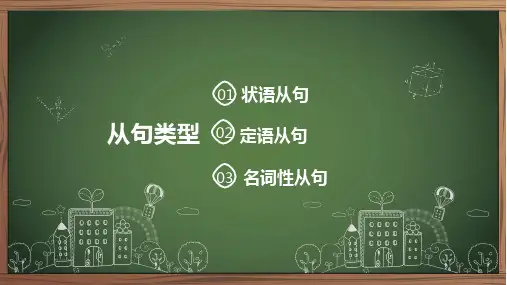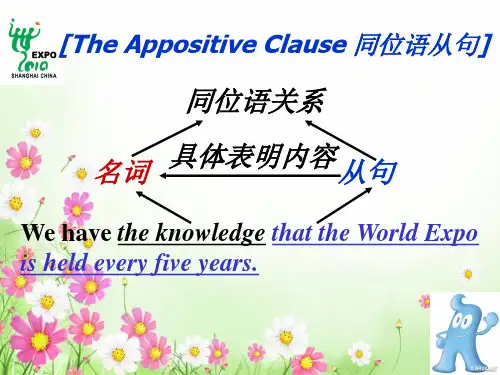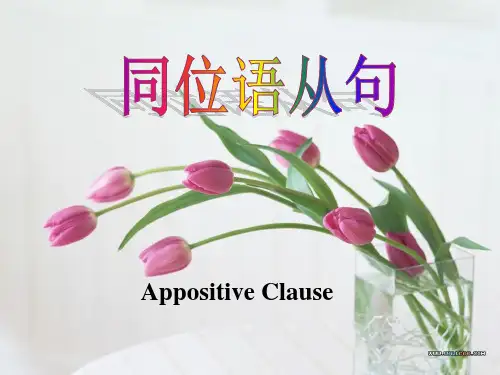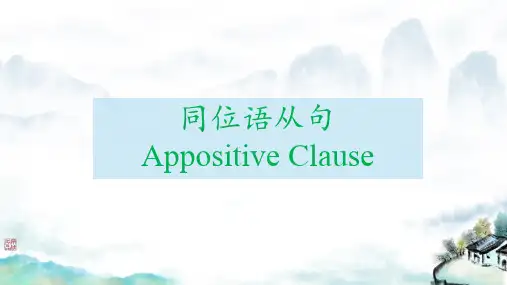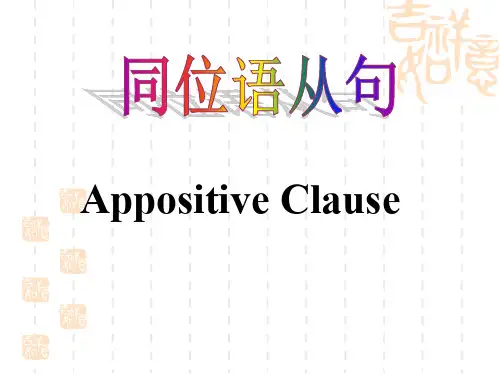that
同位语从句 定语从句
只连接主句和从 代替先行词, 句,在从句中不充 在从句中充当成分 当成分 名词性 形容词性
1.The news that there are no lives on the moon is known to us all. ( 同位语从句 ) 2.The news that you heard is not true. ( 定语从句 ) 3.Have you any idea who he went with? ( 同位语从句 ) 4.Is there any hope that they will be home in time? ( 同位语从句 ) 5.The problem that you referred to doesn’t exist at all. ( ) 定语从句
总结
1)同位语从句跟在名词后面,进一步说明该名词 的具体内容。同位语从句常跟在名词idea, fact, news, hope, thought,suggestion等抽象名词之 后
2)连接词that不能省略,无意义无成分;
3)用whether而不用if引导同位语从句
4)连接代词who(m), which, what,whose在从句 中作主语、宾语、表语或定语; 5)连接副词where, when, why, how在从句作状语。
I didn’t know that you were here.
宾语从句
I had no idea that you were there. 同位语从句
同位语从句 the Appositive Clause
1.概念: 在复合句中作名词的同位语的名词性从句。 2.功能: 同位语从句对名词进一步解释, 说明名词的具体内容。 3.用法: 常跟的抽象名词有:fact/idea/reason thought/order/doubt/news/hope truth/belief/promise/word … 4.连接词:that/whether/who(m)/which what/whose/when/where/why/how
